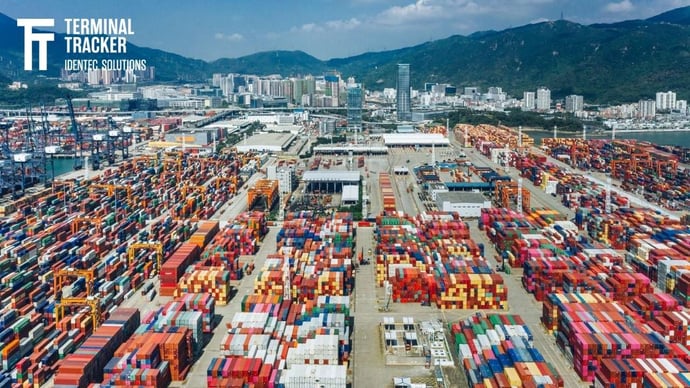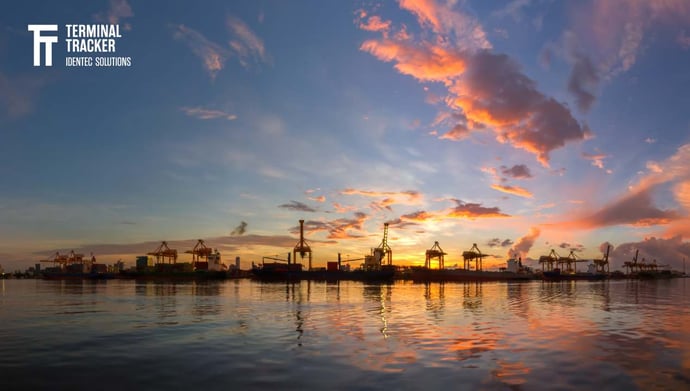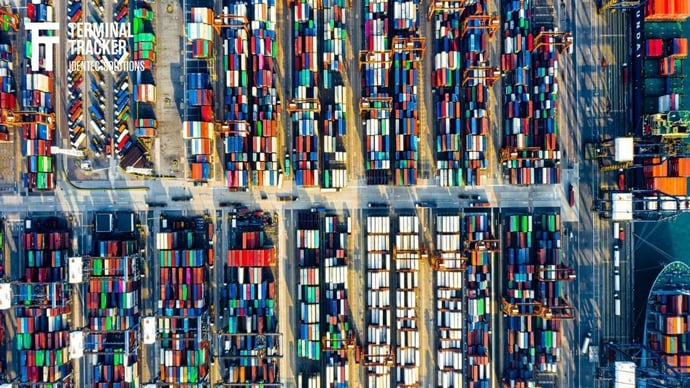Sustainability and the Supply Chain: Container Terminals
| Written by Mark Buzinkay
This post will discuss container terminals' sustainability challenges, examine how they respond to them, and explore ways to integrate sustainability into their operations better. It will also consider how this improved sustainability performance can benefit businesses and consumers. Finally, it will look at how technology can help container terminals make their operations more sustainable.

No video selected
Select a video type in the sidebar.
The global supply chain is vital for the efficient movement of goods worldwide, but its operations have negative environmental impacts. Container Terminals, which are often located in ports, play a crucial role in this system and are significant sources of air pollution, energy consumption and carbon emissions. As governments and businesses strive to reduce their carbon footprints, the container terminal industry must take action to reduce its environmental impacts and support the move towards a greener future.
Challenges Faced by Container Terminals in Sustainability
Container terminals are faced with numerous sustainability challenges that must be addressed. For example, air and noise pollution are major issues for container terminals due to the large amounts of diesel fuel used in large ships, trucks and other vehicles. In particular, diesel-powered cars have been found to be a major source of air pollutants such as nitrogen oxides (NOx), sulfur oxides (SOx), carbon monoxide (CO) and particulate matter (PM). These pollutants can lead to poor air quality in port areas, especially in nearby megacities, which can cause health problems for workers, nearby residents and wildlife. Additionally, the noise produced by vessels and vehicles operating at ports is another concern that must be addressed.
Additionally, energy consumption is high at container terminals since they often operate 24-hour operations powered by diesel generators or electric motors. This leads to increased carbon emissions, costs associated with purchasing fuel or electricity, and the need for a robust energy infrastructure.
Individual countries have set up their own programs, such as Canada, whose Minister of Transport announced an investment of $165.4 million in December 2023.
"With the new Green Shipping Corridor Program, Canada is taking another step towards meeting its commitment to net-zero emissions by 2050. We can work together to establish green shipping corridors to decarbonize the marine sector along the Great Lakes, the St. Lawrence Seaway, as well as Canada's east and west coasts", says Pablo Rodriguez, Minister of Transport of Canada (1).
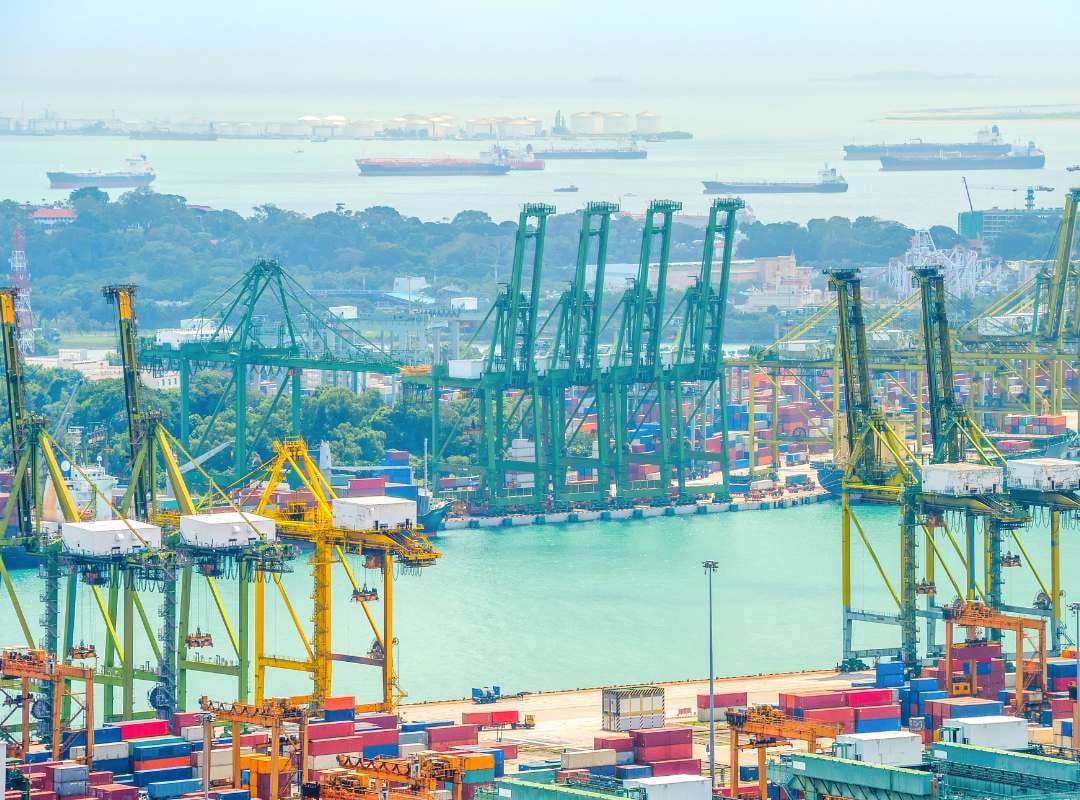
Case study 1: PSA sustainability program and results
PSA has launched numerous sustainability initiatives to help reduce its carbon emissions. These include establishing energy management systems, replacing diesel-powered equipment with electric alternatives, and expanding the use of renewable energy sources in its operations. The Group is also investing in digital technologies such as Artificial Intelligence (AI), Big Data and Blockchain to drive greater efficiency and improve visibility across its supply chain network.
The Group's sustainability efforts have borne fruit, with an absolute decrease of 4% in its carbon emissions from 2019 to 2020. As a result, PSA is on track to achieving its commitment of reducing total carbon emissions by 505 by 2030 compared to the 2019 baseline year. In addition, PSA has achieved positive performance outcomes in other ESG factors over the same period, including a 7% reduction in its total waste generation and the maintenance of injury rates at near-zero levels.
These achievements demonstrate PSA's commitment to its sustainability goals and the importance it places on operating responsibly across all ESG factors. The Group will continue to pursue innovative approaches to further improve its performance in this area as part of its ongoing commitment to creating an ever more sustainable port and supply chain ecosystem for the benefit of all stakeholders (2).
Responses to Sustainable Challenges by Container Terminals
Container terminals have responded to sustainability challenges in various ways, such as developing greener infrastructure and practices, investing in clean energy sources, and implementing sustainable logistics solutions. These initiatives can help reduce air and noise pollution, conserve energy, minimise waste and promote efficient operations.
In terms of infrastructure development, many container terminals have implemented green lighting systems that use LED lights or solar panels to reduce electricity consumption. They have also invested in cleaner fuels such as liquefied natural gas (LNG) and renewable diesel, which are better for air quality. In addition, some ports are beginning to invest in electric vehicles or vessels powered by alternative power sources, such as hydrogen cells or fuel cells.
Container terminals have also implemented sustainable logistics solutions to reduce waste and optimise operations (consult our article about container terminal planning). These include using software for real-time cargo tracking, deploying intelligent robots for automated tasks, and utilising data analytics to improve decision-making. Additionally, some ports are experimenting with blockchain technology to securely manage trade flows and enhance the efficiency of customs processes.
Finally, container terminals are taking steps to integrate technology into their sustainability initiatives in order to improve efficiency and accuracy. For example, terminal automation has been used to reduce labour costs, while process optimisation allows terminals to maximise productivity. In addition, data collection and analysis provide helpful insights that help operators identify areas of improvement, while smart design and connectivity can allow for real-time monitoring of equipment performance. All these initiatives combined have the potential to significantly reduce the environmental impacts associated with container terminals and make them more sustainable.
These initiatives are essential steps in creating a greener, more efficient future for container terminals. By investing in clean energy sources, developing green infrastructure, implementing sustainable logistics solutions and integrating technology into their sustainability strategies, ports can become better for air quality, conserve energy and minimise waste while improving efficiency and accuracy. In doing so, they will be better positioned to meet the challenges of an increasingly globalised world.
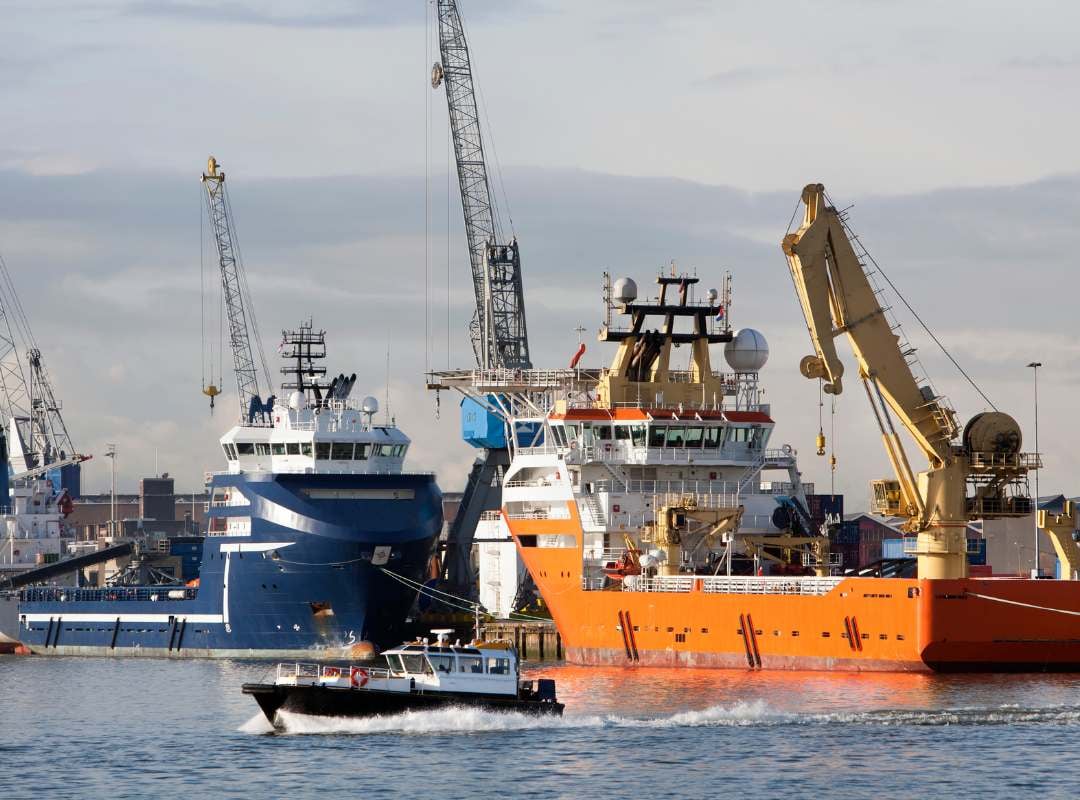
Case study 2: The sustainability initiative at the Port of Rotterdam
The Port of Rotterdam is working hard to become more sustainable, and they have several initiatives in place to help it reach its goals. One of these is their shore power project, which helps reduce emissions from ships while they are docked. They also have a program to reward ships that use cleaner fuels. In addition, they are working on increasing the efficiency of the existing industry and renewing the energy, ground and fuel systems. Finally, vessels that monitor their noise production will also receive a contribution.
The Port of Rotterdam is also focusing on the people who work there. They focus on creating an inclusive port that offers employment directly and indirectly at all levels and for current and future generations. Furthermore, they strive to ensure a good business climate, mobility and economic development in the port area so that they can achieve long-term employment in the future.
Finally, they are investing heavily in technology such as automation, robots, AI, sensing technologies and other technological developments to help make their operations more sustainable. This type of technology helps improve efficiency, reduce emissions, increase safety and boost productivity. The Port of Rotterdam is committed to using these technologies responsibly to minimise the environmental impact of their container yard operations while still providing quality services.
(3)
The Benefits of Improved Sustainability Performance for Container Terminals
Container terminals play a vital role in global trade, providing the infrastructure and services necessary for ships to dock, unload cargo and reload vessels with goods destined for other countries. As such, they are well-positioned to drive sustainability efforts within the maritime industry and reduce the environmental impacts associated with global shipping.
Improved sustainability performance at container terminals can benefit operators and consumers in numerous ways. For instance, more efficient operations enabled by increased utilisation of renewable energy sources or adoption of digital technologies can help ports reduce their carbon emissions while also reducing operating costs. This can lead to more competitive customer pricing options, promoting growth in the wider maritime sector. Additionally, sustainable operations performed at container terminals can contribute to improved air quality in port cities and help preserve natural resources for future generations.
Lastly, improved sustainability performance at container terminals enables operators to meet increasingly stringent environmental regulations while enhancing their reputation with key stakeholders such as customers, investors and the general public. This helps them remain competitive and differentiate themselves in a crowded market. Ultimately, the benefits of improved sustainability performance are numerous and can enable container terminals to become more profitable while benefiting the environment.
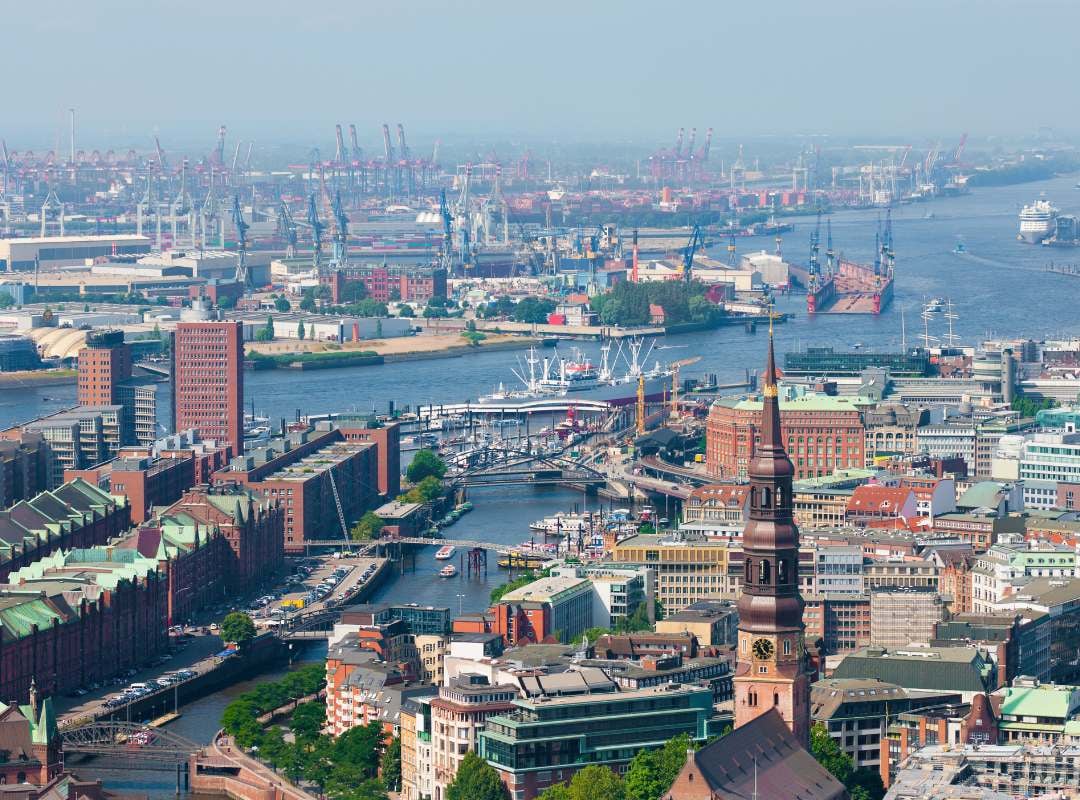
Case study 3: Hamburg port / HHLA sustainability efforts
The Port of Hamburg and HHLA have a long-standing commitment to sustainability. The Port and the company are constantly investing in green technologies, aiming to reduce their environmental impact while improving efficiency. They are focusing on several areas to achieve this goal, including energy efficiency, transportation modes, green infrastructure, low-carbon fuels and alternative power sources.
One example is the introduction of liquefied natural gas (LNG) at ports operated by HHLA. LNG produces significantly lower emissions than other marine fuel types, such as diesel or heavy fuel oil, helping to reduce air pollution near the Port. In addition, the company has also invested in renewable energy sources such as wind power and photovoltaic panels on its premises. These renewable sources are used to power port operations, reducing the need for fossil fuels and helping reduce CO2 emissions.
HHLA also implemented several efficiency measures in 2021 to reduce energy consumption and waste. For example, they have installed LED lights in their terminals and offices, improving visibility while using less energy. Automation has also been introduced on some of their terminals, increasing throughput and efficiency while decreasing reliance on manual labour. This reduces both operating costs and environmental impact.
Finally, HHLA is committed to investing in green infrastructure designs supporting sustainability goals while simultaneously providing efficient service. For example, they are developing an intelligent traffic management system which uses advanced analytics to optimise vessel loading and unloading times. This helps reduce congestion at the Port while also improving efficiency and energy consumption (4).
Incorporating Technology into Sustainability Initiatives
Incorporating technology into sustainability initiatives is an effective way for container terminals to reduce their environmental impacts while also improving operational efficiency and safety. Using smart technologies such as automation, sensors, and artificial intelligence can help streamline operations, increase visibility, detect potential problems and ensure that ships comply with environmental regulations.
For example, automated guidance systems can improve the accuracy of docking operations by using sensors to detect obstacles and reduce the need for manual intervention. This results in fewer mistakes and reduces the amount of fuel used during a ship's stay at the Port. Additionally, intelligent routing systems can optimise routes and speeds based on real-time data from onboard systems, further optimising fuel consumption.
Other benefits include improved safety through the use of automated safety systems and reduced maintenance costs through predictive maintenance. This can help operators reduce their environmental footprint while also reducing operational costs.
Lastly, container terminals can better understand their sustainability performance by collecting data from various sources such as ships, shore facilities and weather services. As a result, they can track progress towards goals and identify potential areas for improvement. They can also use the data to benchmark against other ports or compare performances over time.
Overall, technology offers numerous benefits to container terminals looking to improve their sustainability performance. By leveraging these smart technologies, they can reduce their environmental impact while continuing to provide quality customer service. With all these advantages in mind, incorporating technology into sustainable operations is essential for the container terminal industry.

Case Study 4: The Port of Melbourne's sustainability efforts
Port of Melbourne is investing in its sustainability strategy, working closely with the local and government stakeholders to ensure that the port operations are conducted in accordance with environmental, social and governance practices. As a result, they have recently implemented many initiatives to minimise their environmental impacts, such as reducing energy consumption, conserving water resources, increasing recycling/reuse rates, cutting waste disposal and investing in renewable energy sources.
The Port has invested heavily in green infrastructure, including solar power and LED lighting systems, along with installing electric vehicle charging points for staff members. The Port is currently working towards obtaining the Carbon Neutral certification to further reduce its carbon footprint. Additionally, they are pioneering plastic-free port initiatives to reduce plastic pollution, one of today's most pressing environmental concerns.
Port of Melbourne is also engaged in numerous social initiatives to create a positive impact in its local community. For example, they are actively working with local charities and organisations to promote diversity, improve educational opportunities for young people, and provide employment pathways for disadvantaged job seekers. In addition, the Port has a comprehensive Human Rights Policy, which ensures that stakeholders across the entire supply chain comply with human rights standards (5).
FAQs
Connecting Sustainability: The Crucial Role of Container Terminals in Green Corridors
Today's global economy represents one of the main challenges for environmental sustainability. To address this, the concept of "green corridors" was developed as a strategy to optimise logistics while minimising environmental impacts.
Green corridors are logistics routes and supply chain networks designed to reduce carbon emissions. They include various sustainable practices such as the use of clean fuels, efficient transport and optimised infrastructure.
Container terminals play a crucial role in the success of green corridors due to their position as central hubs. Their contribution to the success of the effort is:
Efficient cargo handling: By reducing idle time during the efficient loading and unloading of cargo from ships, trucks or trains, the carbon emissions per unit of cargo transported are reduced.
Introduction of clean technologies: Many terminals are at the beginning or already in the middle of the transition to clean technologies, such as electrical equipment and shore power systems. This not only reduces air pollution but also helps to avoid noise, for example.
Infrastructure development: Investments in green infrastructure such as LED lighting, solar panels and green buildings reduce greenhouse gas emissions and energy consumption. Efficient terminal layouts achieved during new construction and renovation prevent unnecessary transport within the port areas.
Integration of sustainable practices: Container terminals increasingly integrate renewable energy sources, waste reduction strategies, and environmentally friendly logistics solutions into their daily operations.
Takeaway
Technology offers many benefits to container terminals looking to improve their sustainability performance. By incorporating technology into their operations, they can reduce their environmental impact while continuing to provide quality customer service. With all these advantages in mind, integrating technology into sustainable operations is essential for the container terminal industry. With suitable investments and planning, container terminals can continue to improve their sustainability performance and ensure that their operations remain efficient and environmentally friendly.
Dive deeper into our full series of articles about port automation
Glossary
ESG stands for Environmental, Social, and Governance, a framework for assessing a company's sustainability and ethical impact. It evaluates environmental factors like carbon emissions and waste management, social aspects such as employee treatment and community relations, and governance issues including executive compensation and board diversity. ESG criteria help investors and stakeholders measure a company's non-financial performance, risks, and opportunities, influencing investment decisions and corporate strategies towards more responsible business practices. (6)
LNG stands for Liquefied Natural Gas, which is natural gas cooled to -162°C (-260°F), converting it to a liquid state. This process reduces its volume by about 600 times, making it more efficient for storage and transportation. LNG is used in the global energy supply chain, shipped in specialised tankers to terminals where it's regasified and distributed. It's considered a cleaner fossil fuel alternative and plays a significant role in international energy trade. (7)
Sources:
(1) https://www.canada.ca/en/transport-canada/news/2023/12/minister-of-transport-announces-the-green-shipping-corridor-program-to-help-cut-pollution-in-marine-shipping.html
(2) https://www.globalpsa.com/wp-content/uploads/PSA-International-Sustainability-Report-2021.pdf
(3) https://www.portofrotterdam.com/en/building-port/sustainable-port
(4) https://report.hhla.de/annual-report-2021/
(5) https://www.portofmelbourne.com/wp-content/uploads/2021-Sustainability-Report-FINAL.pdf
(6) Environmental Social Governance: Managing Risk and Expectations by Spitz, Trudinger, and Orr, Routledge, 2022
(7) Handbook of Liquefied Natural Gas by Saeid Mokhatab et al., Gulf Professional Publishing, 2013
Note: This article was updated on the 25th of January 2025

Author
Mark Buzinkay, Head of Marketing
Mark Buzinkay holds a PhD in Virtual Anthropology, a Master in Business Administration (Telecommunications Mgmt), a Master of Science in Information Management and a Master of Arts in History, Sociology and Philosophy. Mark spent most of his professional career developing and creating business ideas - from a marketing, organisational and process point of view. He is fascinated by the digital transformation of industries, especially manufacturing and logistics. Mark writes mainly about Industry 4.0, maritime logistics, process and change management, innovations onshore and offshore, and the digital transformation in general.

